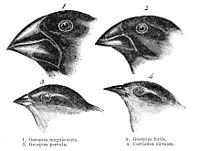
Photo from wikipedia
675 Trial of labor after cesarean section for estimated large for gestational age fetuses Aya Mohr Sasson, Zohar Goichberg, Hadel Watad, Shali Mazaki-Tovi, Eyal Sivan, Israel Hendler Department of Obstetrics… Click to show full abstract
675 Trial of labor after cesarean section for estimated large for gestational age fetuses Aya Mohr Sasson, Zohar Goichberg, Hadel Watad, Shali Mazaki-Tovi, Eyal Sivan, Israel Hendler Department of Obstetrics and Gynecology, Sheba Medical Center, Ramat Gan, Ramat Gan, Israel, Sackler School of Medicine, Tel Aviv University, Tel Aviv, Tel-Aviv, Israel, Department of Obstetrics and Gynecology, Sheba Medical Center, Ramat Gan, Ramat Gan, Israel, Sackler School of Medicine, Tel Aviv University, Tel Aviv, Tel Aviv, Israel, Sackler School of Medicine, Tel Aviv University, TelAviv, TelAviv, Israel, Sackler School of Medicine, Tel Aviv University, Tel -Aviv, Tel Aviv, Israel OBJECTIVE: Trial of labor after cesarean section is considered relatively contraindicated for macrosomic fetuses. No recommendation exists concerning fetuses who are estimated large for gestational age ( 90 percentile). The aim of this study was to evaluate obstetrical outcome of vaginal delivery after cesarean section in women with and without large estimation of fetal weight. STUDY DESIGN: A retrospective cohort study of all pregnant women admitted to a single tertiary care center between January 2012 to July 2017 for trial of vaginal birth after cesarean section. Inclusion criteria included singleton pregnancy, gestational age 37 and large estimation of fetal weight ( 90% percentile). Women with multiple gestation pregnancy, 2 cesarean section, non-vertex presentation, intrauterine fetal demise or maternal indication for cesarean section were excluded. Primary outcome was defined as the rate of successful vaginal delivery. RESULTS: Out of 34,897 women that gave birth in our center, 1949 (5.58%) met inclusion criteria, of them 78 (4%) women with large estimation of fetal weight (study group) and 1871(96%) controls. Women in the study group were older (35 vs. 33; p1⁄40.004), with higher Body Mass Index (30.9 vs.27.5; p1⁄40.001) and higher gravidity (4 vs. 3; p1⁄40.001) compared to the controls. The median glucose concentration of GCT performed during weeks 24-28 of gestation was 105 (IQR 89-127) vs.106 (IQR 91-121) mg/dl for the study group and controls, respectively (p1⁄40.97). Gestational diabetes was diagnosed in 12.5% of the women in the study group compared to 14.9% of the controls (p1⁄40.676). The median gestational week at delivery was 39.3 for both groups. The median fetal weight was higher in the study group as expected [3887g (IQR 3718-4073) vs. 3275g (IQR 2995-3545)]. 1506 (80.5%) of the women in the control group had successful vaginal delivery compared to 55(70.5%) women in the study group (p1⁄4 0.031), with no significant difference in the rate of 3 /4 degree perineal tear, shoulder dystocia or need for blood transfusion. The rate of post-partum hemorrhage was significantly higher in the study group compared to controls (7.7% vs.1.7%; p1⁄40.001). Among women who delivered by cesarean section there was no difference in the rate of scar dehiscence or uterine rupture.
Journal Title: American Journal of Obstetrics and Gynecology
Year Published: 2019
Link to full text (if available)
Share on Social Media: Sign Up to like & get
recommendations!